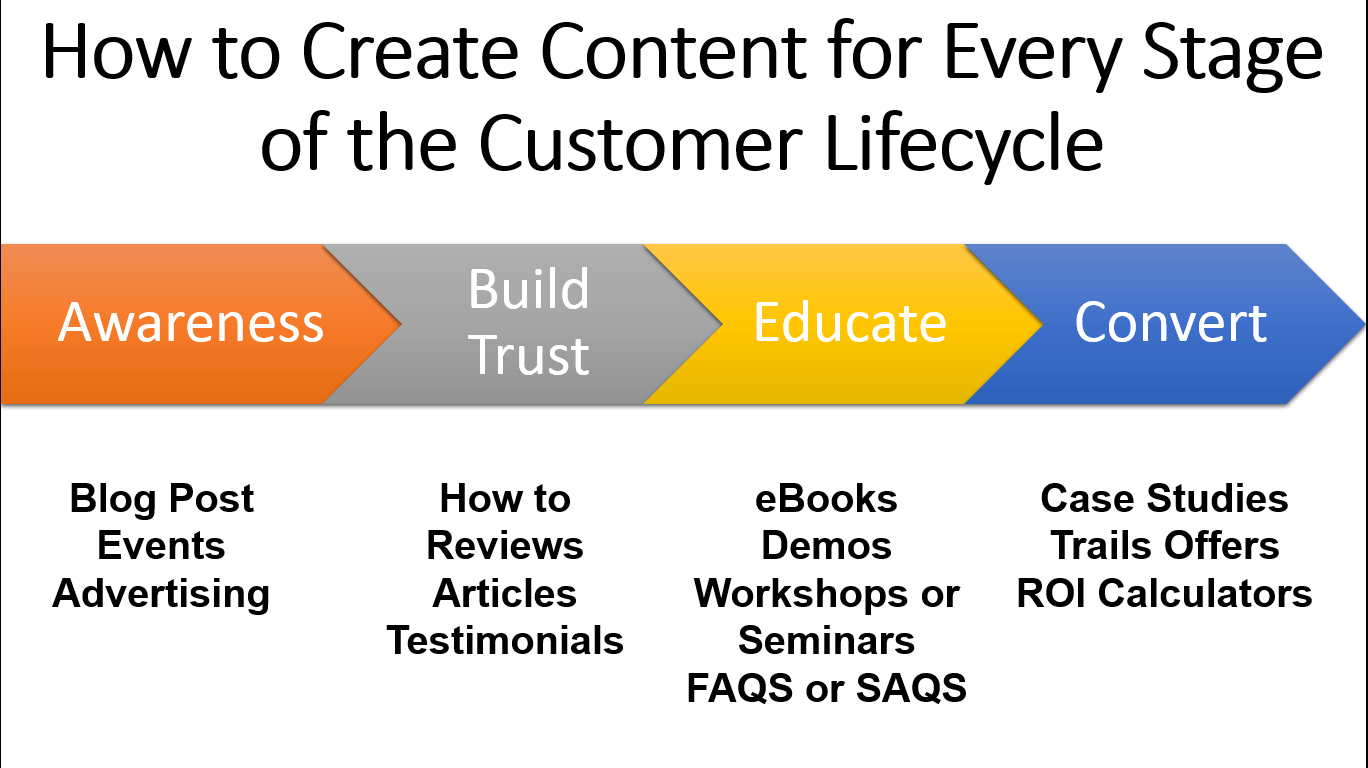How to Create Content for Every Stage of the Customer Lifecycle
Everyone’s talking about content as a foundational element of marketing these days. Like it or not, to successfully market your business, you’ve got to get into the content creation game, but only from a standpoint that it builds your business—get more leads and sales.
Most content marketing research suggests that the adoption rate among marketers – both B2B and B2C – is around 90% or above. Pretty much, everyone in marketing is doing content these days… or are they? Aberdeen’s content marketing research , confirms that 92% of marketers report that creating high-quality content is either valuable or very valuable to their organizations, but only 52% of those marketers rate their execution as “effective” or “very effective.”
The problem is that businesses pump out content at such a ridiculous rate these days — and as that volume increases, more confusion about how it benefits the organization is bound to creep in.
That’s why at some point, companies must accept that they’ll need to view its production from a strategic point of view. See, the secret t o getting more leads and sales with content isn’t quantity but intention. If you create content with the intention of it to address business objectives— create awareness, build trust, educate and convert —you’ll likely create an asset that provides a return.
In other words, you need content for every aspect of the customer life-cycle and the best way to employ this is to match different kinds of content with the customer life cycle.
So, your content-customer-life-cycle might look something like this:
Suspect Content – Generates awareness with everyone in your target market
When your target market is not aware or have top-of-mind awareness of your company, product, service or the benefit it offers, then the first two objectives of content is to create awareness and build trust. Awareness and trust can be built through:
- Blogs
- Testimonials
- Customer Reviews
- Articles
At the heart of every transaction is TRUST and in general, trust is what’s in short supply. If more people trust you, everything else will fall into place.
There’s a really big gap between someone being aware of you (which is really hard) and someone trusting you, enough to invest in you or buy from you.
Prospect Content – Anyone who has taken action to solve a problem that you can assist them with
There’s an huge difference between awareness and action. Putting something in the world for awareness is useless if it doesn’t lead to taking action.
As the market begins to trust you and competition increasing in that market. Prospects will take action to compare you on price unless you give them a differentiation….your unique process, your solution, your message and/or your approach. At this stage you need to you need to educate those prospects that want to learn more about your differentiation:
- Special Reports
- Information Packed Guide
- Marketing Kit
- Seminar/Webinar
People want to be educated not sold. They will sell themselves if you just commit to educating.
Customer Content – A person or organization that has bought products or services from you
You’ve done all this work attracting and educating now show your customers how to get the most out of what they just bought. This builds loyalty and community.
- How-to Information
- New Customer Guide
- Workshops
- Q&A Sessions
This is were most organizations stop their content marketing but you should continue it if you want keep customers and create repeat sales.
Advocate Content – A person or organization that tells others and basically sells for you
The last stage of content that creates and keeps a customer is one that’s often overlooked. Ultimately, great content has the ability to help your raving fans spread the word, increase awareness, generate leads and convert prospects .
- Referral certificate or coupon
- Access to “behind the scenes” content
- Customer appreciation events
- Referable emails
Content creation is the hardest job these days, but when you plan your content with your customer life cycle in mind it pays off more often than not.





